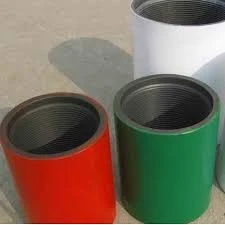- Afrikaans
- Albanian
- Amharic
- Arabic
- Armenian
- Azerbaijani
- Basque
- Belarusian
- Bengali
- Bosnian
- Bulgarian
- Catalan
- Cebuano
- Corsican
- Croatian
- Czech
- Danish
- Dutch
- English
- Esperanto
- Estonian
- Finnish
- French
- Frisian
- Galician
- Georgian
- German
- Greek
- Gujarati
- Haitian Creole
- hausa
- hawaiian
- Hebrew
- Hindi
- Miao
- Hungarian
- Icelandic
- igbo
- Indonesian
- irish
- Italian
- Japanese
- Javanese
- Kannada
- kazakh
- Khmer
- Rwandese
- Korean
- Kurdish
- Kyrgyz
- Lao
- Latin
- Latvian
- Lithuanian
- Luxembourgish
- Macedonian
- Malgashi
- Malay
- Malayalam
- Maltese
- Maori
- Marathi
- Mongolian
- Myanmar
- Nepali
- Norwegian
- Norwegian
- Occitan
- Pashto
- Persian
- Polish
- Portuguese
- Punjabi
- Romanian
- Russian
- Samoan
- Scottish Gaelic
- Serbian
- Sesotho
- Shona
- Sindhi
- Sinhala
- Slovak
- Slovenian
- Somali
- Spanish
- Sundanese
- Swahili
- Swedish
- Tagalog
- Tajik
- Tamil
- Tatar
- Telugu
- Thai
- Turkish
- Turkmen
- Ukrainian
- Urdu
- Uighur
- Uzbek
- Vietnamese
- Welsh
- Bantu
- Yiddish
- Yoruba
- Zulu
pup joint specifications
Understanding PUP Joint Specifications
PUP joint specifications are essential components in various industries, particularly in construction, oil and gas, and water management. The PUP, or Pup joint, refers to a short section of pipe that is used to connect two longer sections of pipe. This component is crucial for ensuring the integrity and functionality of pipeline systems. In this article, we will explore the specifications of PUP joints, their importance, and the factors that influence their design and production.
Key Specifications
PUP joints are typically specified according to several key parameters, including diameter, wall thickness, material, and pressure rating. The diameter of the PUP joint must match that of the existing pipeline to ensure a proper fit. It is crucial that the wall thickness is sufficient to withstand the internal pressures and external forces that the pipeline will encounter. Common materials used for PUP joints include carbon steel, stainless steel, and various alloys, each chosen based on the environmental conditions and the medium being transported.
Pressure rating is another critical specification. PUP joints must be rated to handle the maximum pressure expected in the pipeline, ensuring safety and functionality. This rating is determined based on factors such as the material properties, joint design, and the operational environment.
Importance of PUP Joints
The importance of PUP joints cannot be overstated. These joints provide flexibility in pipeline design and installation, allowing engineers to make adjustments as necessary. They also facilitate repairs and modifications to existing systems without the need for extensive overhauls. In oil and gas applications, for instance, PUP joints can accommodate changes in pipeline direction or elevation, making them invaluable in complex installations.
pup joint specifications

Moreover, the reliability of PUP joints is critical for safety. Failure of a joint can lead to leaks, spills, or catastrophic failures, which can have severe environmental and economic consequences. Therefore, understanding and adhering to PUP joint specifications is paramount for engineers and contractors involved in pipeline projects.
Factors Influencing Design and Production
Several factors influence the design and production of PUP joints. Environmental conditions, such as temperature extremes and exposure to corrosive substances, must be taken into account. For example, pipelines in offshore environments require joints that can withstand saltwater corrosion, leading to the selection of more resistant materials.
Another factor is the intended application. Different industries have varying requirements for pressure capacity and material strength. For instance, pipelines transporting natural gas might require joints with higher pressure ratings compared to those used for water transport.
Conclusion
In conclusion, PUP joint specifications play a crucial role in the design and functionality of pipeline systems across various industries. By understanding the key specifications, the importance of PUP joints, and the factors influencing their design, engineers can ensure safer and more efficient pipeline operations. Properly specified and manufactured PUP joints not only enhance the reliability of pipeline systems but also play a vital role in safeguarding the environment and public safety. As industries continue to evolve, maintaining stringent specifications for PUP joints will remain essential for sustainable operations.
-
Tubing Pup Joints: Essential Components for Oil and Gas OperationsNewsJul.10,2025
-
Pup Joints: Essential Components for Reliable Drilling OperationsNewsJul.10,2025
-
Pipe Couplings: Connecting Your World EfficientlyNewsJul.10,2025
-
Mastering Oilfield Operations with Quality Tubing and CasingNewsJul.10,2025
-
High-Quality Casing Couplings for Every NeedNewsJul.10,2025
-
Boost Your Drilling Efficiency with Premium Crossover Tools & Seating NipplesNewsJul.10,2025







